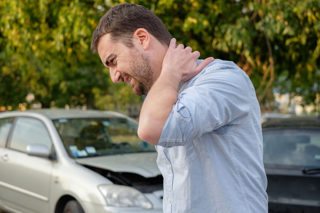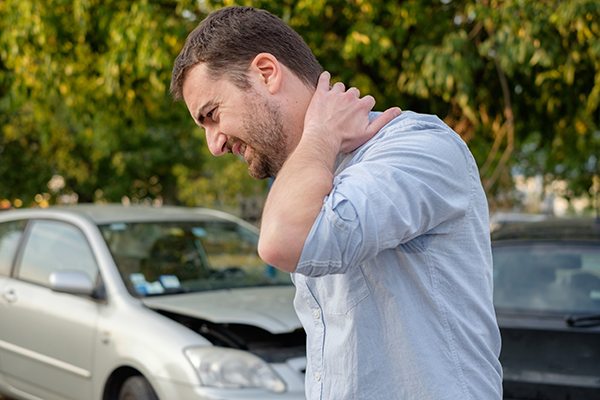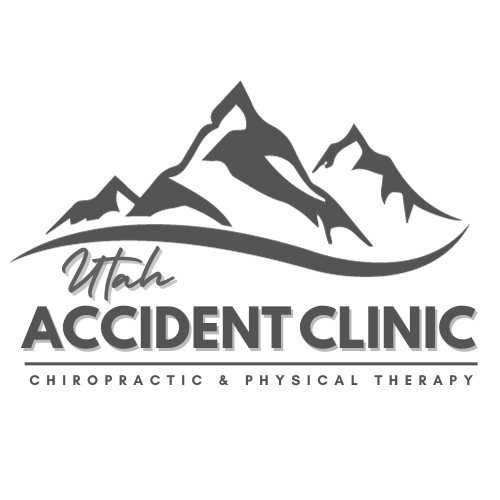
Man feeling bad after a car accident injury
FAQ About Whiplash After a Car Accident
Whiplash is a common auto accident injury. While many people dread it, few understand the symptoms of whiplash or know what to do if they are injured. Learn to recognize signs of whiplash, what you should and shouldn’t do, and review the recommended ways to treat whiplash.
What is whiplash?
Whiplash is a type of neck strain that occurs when the head rapidly moves backward and forwards, as in a car accident. While this is a common auto accident injury due to the impact of the crash, whiplash can occur after bicycle accidents, sports injuries, and other trauma as well.
Why is it so common after car accidents?
Whiplash begins when the neck whips back and forth, thereby causing the cervical spine to thrust out of alignment. That is what happens in many auto accidents. One important thing to note is you don’t need to have suffered a high-speed crash to get with whiplash. If your car were standing still or in a fender bender going under 10 miles an hour, you could still wind up with whiplash.
Who is at risk of whiplash?
Individuals of any age can get whiplash. However, aging increases your risk of this chronic neck strain and its intensity. As you age, your spine and neck muscles become less flexible. Flexibility acts as a natural resilience against whiplash, and it may protect younger people from getting whiplash or limiting its severity.
How do I know if I have whiplash?
Whiplash has a delayed onset. While it can show up the day after the accident, it may take weeks or even months for whiplash symptoms to set on. If you experience any of the following symptoms, consider getting checked out.
Top symptoms of whiplash include a stiff neck, neck pain, neck tension, and shoulder pain. If you have whiplash, you may be unable to move your neck from side to side. Headaches that radiate from the back of the neck are common with whiplash.
Since whiplash can impinge nerves that travel down the neck and shoulders, some patients report that pain creeps from the neck region down the back and shoulders. Some whiplash sufferers experience a pins-and-needles sensation or muscle spasms in the arms.
Accompanying the physical sensations are cognitive symptoms including difficulty staying focused.
How should I treat it?
Rest and ice will not treat whiplash, although these home remedies may relieve pain and stiffness. For the first days after the incident, you may use ice to reduce inflammation. After that, switch to heat therapy and seek care.
Doctors used to recommend a neck collar to stabilize the neck and heal whiplash. However, this approach has fallen out of favor, and doctors now believe a neck collar weakens the neck muscles.
While pain medication will control the symptoms of whiplash, medication will not help whiplash go away. It only blocks the pain signals for temporary relief.
If you try to resume activity before you have healed, you risk causing chronic neck pain. To truly recover from whiplash, you need to seek care. Medical doctors, physical therapists, and chiropractors may all be able to relieve whiplash.
Should I see a doctor or chiropractor?
The sort of medical attention you opt for depends on your personal preference and other injuries that you may have sustained. If you have lacerations, broken bones, or other medical issues, you should see a physician as soon after the accident as possible.
Medical doctors are skilled at treating auto accident injuries. However, they may skip over your whiplash, especially if you visit while you are still experiencing shock from the accident.
Chiropractors won’t be able to set a broken bone for you, but they are skilled at healing the musculoskeletal system and relieving injuries of the spinal column. Since whiplash pushes the cervical spine out of alignment, it’s in a chiropractor’s wheelhouse to treat this injury at the root and resolve your symptoms quickly.
Chiropractors use several techniques to realign the spine. Some use their hands, while others use instruments. Chiropractors may use laser treatment or therapeutic massage to heal soft tissue harmed in the accident. These treatments reduce inflammation, promote circulation, and encourage the body to begin recovering from the injuries using the natural capacities of the nervous system.
Chiropractic treatment is gentle and non-invasive, so you can continue to take pain medication while you see the practitioner if it improves your symptoms. However, many patients find chiropractic adjustments provide all the pain relief they need, so they stop taking medication.
Since chiropractic restores the alignment of the spine, it effectively treats whiplash.
The earlier after a car accident you can begin treatment for whiplash, the sooner you will recover. Take a step for your overall health and schedule a consult if you experience lingering neck pain after an auto accident.












